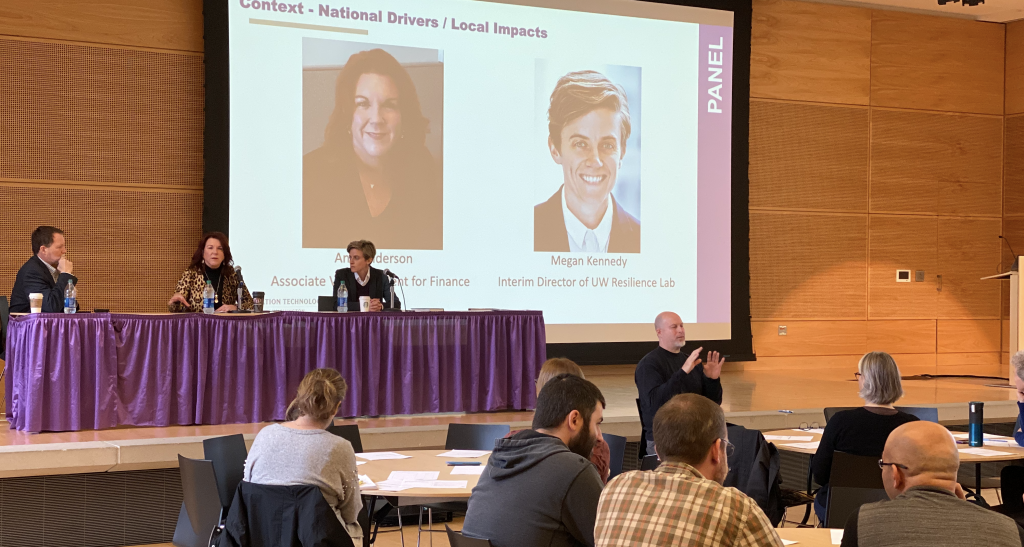EA Showcase 2019 – Event Resources
The EA Showcase 2019 was a success. We had a good crowd from across campus join us for the morning. The morning started with high level challenges and trends and then moved on to table work on UW-specific concerns. All of this was used to demonstrate why Enterprise Architecture has moved away from developing “wiring diagrams” of the technology towards a much more collaborative and cross-cutting change leadership practice.
What did attendees take away?
“It was great to have a conversation at the enterprise level.” “Hearing from the panelists – their expertise and experience.” “It was good to talk to people from other parts of the University.” “I liked the direction and leadership based on the EA Charter and resources.” “There is so much to leverage from the website including the resources and the EA team’s expertise.” “Three hours was not enough time.”
Summary and Links to Resources:
Jim Phelps, Director of Enterprise Architecture & Strategy, started the morning talking about Digital Transformation and the impacts it will have on society and universities. Megan Kennedy, Interim Director of the UW Resilience Lab, followed up with a discussion about student well-being and student challenges around food, housing and mental health. Ann Anderson, Associate Vice President of Finance, then discussed the financial realities of higher education and how UW is meeting those challenges. Ann also discussed the drivers for the UWFT program.
These high-level challenges and trends set the stage for the rest of the morning which was spent doing group work at tables. The EA team; Rupert Berk, Jacob Morris and Piet Niederhausen; walked the room through the EA Value Chain and Architectural Value statements. The tables then worked on a architectural challenge in their space – developing a trends and drivers, a scope statement, and doing an engagement scan.
The closing highlighted how architectural problems are “adaptive problems” that is problems where the both problem is unclear and the solution is unclear. These problems require a collaborative and matrixed response to solve. The idea of the “virtual architect” – that is a collaborative architectural effort involving many participants – was introduced as the new way EA thinks about their practice.
The team highlighted resources (linked from our website) that are available to the attendees to help them in their own work.
Resources:

